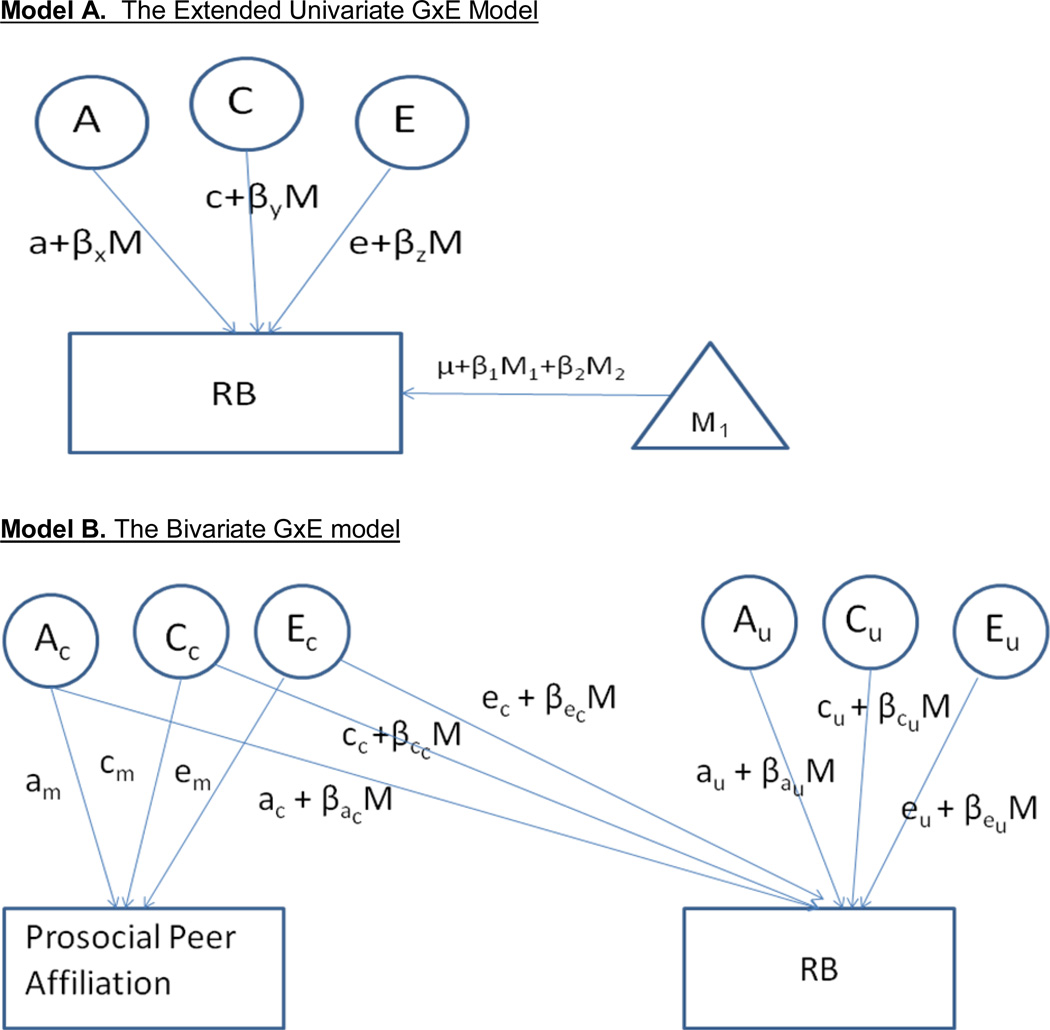Figure 1.
Note. A, C, and E represent genetic, shared environmental, and non-shared environmental influences, respectively. For ease of presentation, the co-twin variables and paths are omitted here, though they are estimated in the models. In the extended univariate twin model (van der Sluis et al., 2012), interactions with the linear moderator are added to the genetic and environmental paths, and are estimated separately for each component of variance (i.e., βxM, βYM, and βZM for a, c, and e paths, respectively). The non-linear moderators are not shown. In the bivariate GxE model (Purcell, 2002), AC and AU respectively represent genetic influences on rule-breaking (RB) held in common with the moderator (prosocial peer affiliation; labeled M above) and those unique to RB. Interactions with the moderator are added to these common and unique genetic influences. Only the latter are thought to index “true” GxE.

